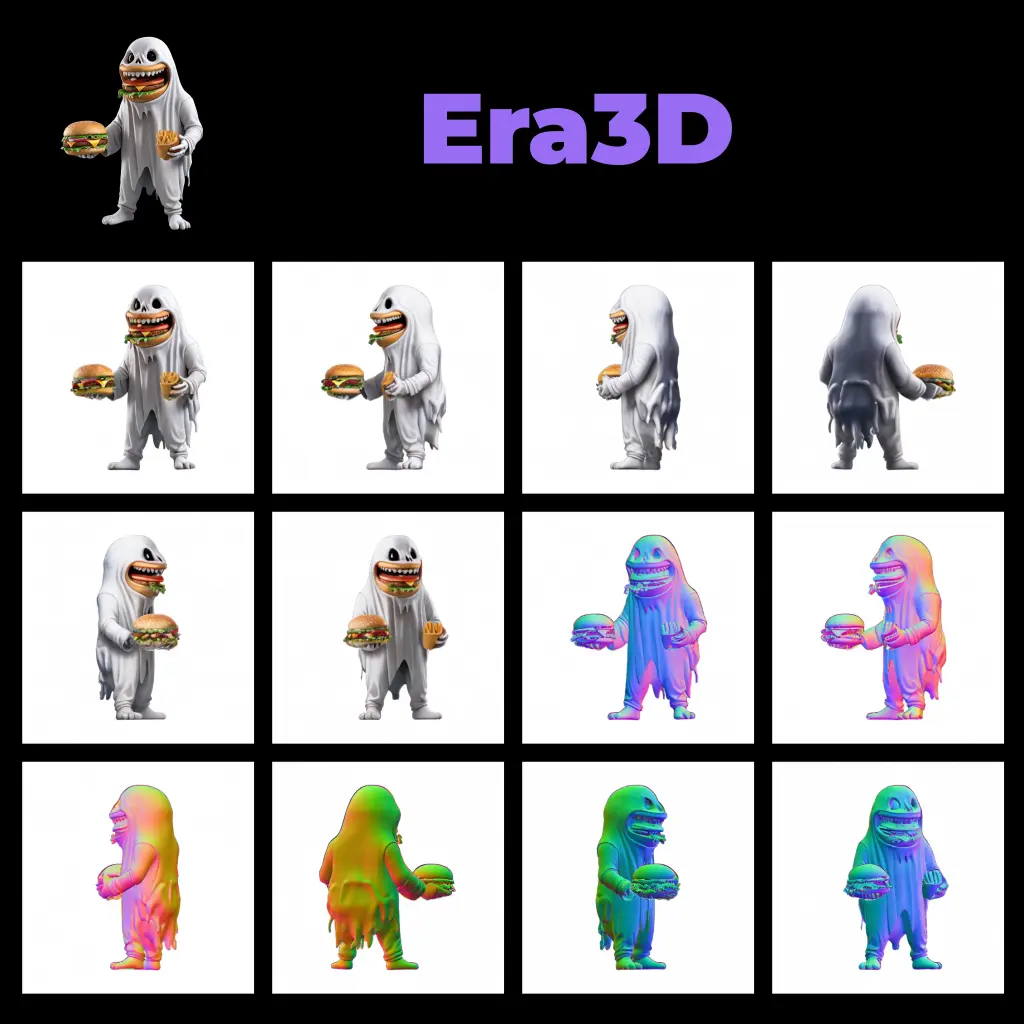ComfyUI Node: Float Sequence 🕒🅡🅣🅝
FloatSequence
Categoryreal-time/control/sequence
RyanOnTheInside (Account age: 3974days) Extension
Nodes for use with real-time applications of ComfyUI Latest Updated
2025-03-26 Github Stars
0.03K
How to Install Nodes for use with real-time applications of ComfyUI
Install this extension via the ComfyUI Manager by searching for Nodes for use with real-time applications of ComfyUI- 1. Click the Manager button in the main menu
- 2. Select Custom Nodes Manager button
- 3. Enter Nodes for use with real-time applications of ComfyUI in the search bar
Visit ComfyUI Online for ready-to-use ComfyUI environment
- Free trial available
- 16GB VRAM to 80GB VRAM GPU machines
- 400+ preloaded models/nodes
- Freedom to upload custom models/nodes
- 200+ ready-to-run workflows
- 100% private workspace with up to 200GB storage
- Dedicated Support
Float Sequence 🕒🅡🅣🅝 Description
Cycle through predefined float numbers for dynamic AI art patterns, parameter control, smooth transitions, and real-time operation.
Float Sequence 🕒🅡🅣🅝:
The FloatSequence node is designed to cycle through a predefined sequence of floating-point numbers, allowing you to create dynamic and evolving patterns in your AI art projects. This node is particularly useful for scenarios where you need to control or animate parameters over time, providing a smooth transition between different values. By leveraging this node, you can automate the process of changing float values in a sequence, which can be beneficial for creating complex animations or effects that require precise control over numerical parameters. The node operates in real-time, making it an excellent tool for interactive applications where immediate feedback is essential.
Float Sequence 🕒🅡🅣🅝 Input Parameters:
values
This parameter accepts a string of comma-separated float values, which defines the sequence through which the node will cycle. The default sequence is "0.0, 0.5, 1.0". Each value in the sequence represents a point that the node will transition to during its operation. The sequence of values you provide will directly impact the behavior and output of the node, as it determines the range and order of the float values that will be cycled through.
steps_per_item
This parameter specifies the number of steps the node will take before moving to the next value in the sequence. It controls the duration each value is held before transitioning to the next, allowing you to fine-tune the timing of the sequence. A higher number of steps will result in a slower transition, while a lower number will speed up the cycle.
sequence_mode
This parameter determines the order in which the sequence is cycled. Options include "forward", "reverse", "pingpong", and "random". "Forward" cycles through the sequence from start to end, "reverse" goes from end to start, "pingpong" alternates direction at each end of the sequence, and "random" selects values randomly. The choice of mode affects the flow and pattern of the sequence, providing flexibility in how the values are cycled.
always_execute
This boolean parameter, defaulting to True, dictates whether the node should always execute its update function, even if no changes have occurred. This can be useful in scenarios where continuous updates are necessary, regardless of state changes, ensuring that the sequence remains active and responsive.
Float Sequence 🕒🅡🅣🅝 Output Parameters:
FLOAT
The output of the FloatSequence node is a single floating-point value, which represents the current value in the sequence at any given time. This output can be used to drive other parameters or nodes in your project, allowing for dynamic and responsive changes based on the sequence defined. The output is crucial for creating animations or effects that rely on smoothly transitioning float values.
Float Sequence 🕒🅡🅣🅝 Usage Tips:
- To create smooth transitions, ensure that the
steps_per_itemparameter is set to a value that matches the desired speed of change. Adjusting this parameter can help achieve the right pacing for your animation or effect. - Experiment with different
sequence_modesettings to find the pattern that best suits your project. For instance, using "pingpong" can create a back-and-forth effect, while "random" can introduce variability and unpredictability.
Float Sequence 🕒🅡🅣🅝 Common Errors and Solutions:
Invalid float value in sequence
- Explanation: This error occurs when the
valuesparameter contains non-numeric or improperly formatted entries. - Solution: Ensure that all entries in the
valuesstring are valid float numbers, separated by commas, and free of any extraneous characters or spaces.
Sequence mode not recognized
- Explanation: This error happens if the
sequence_modeparameter is set to a value that is not one of the recognized options ("forward", "reverse", "pingpong", "random"). - Solution: Double-check the
sequence_modeparameter to ensure it matches one of the accepted values. Correct any typos or incorrect entries.
Float Sequence 🕒🅡🅣🅝 Related Nodes
RunComfy is the premier ComfyUI platform, offering ComfyUI online environment and services, along with ComfyUI workflows featuring stunning visuals. RunComfy also provides AI Playground, enabling artists to harness the latest AI tools to create incredible art.



